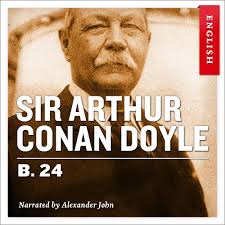Indonesia as a Maritime Power
(Jokowi’s
Visions, Strategies, and Obstacles Ahead)
Maritime Connectivity and Commerce
The main purpose of Jokowi is Indonesia as a global maritime axis by
enhances inter-island connectivity and upgrades port infrastructure within the
Indonesian archipelago. This lack of
connectivity is real in the outer islands of Eastern Indonesia, such as Maluku
and North Maluku. As a result, many of
these islands act as self-sufficient economies, not contribute or get benefit
from national economic production and distribution processes. Inter-island
connectivity is hoped to enable effective internal utilization and prevent
external poach of maritime resources. An inter-connected archipelago can
leverage Indonesia’s choke points and maritime corridors to enhance trade and
commerce.
Maritime Security
Jokowi’s vision erects a defensive firewall in the form of an advanced
navy to protect the country’s maritime assets, sea-lanes, and territorial
waters from both non-traditional security threats and external incursions. To
meet the goals of his plan, Jokowi has laid out a two-fold approach, raising
the defence budget to 1.5 percent of GDP (Gross Domestic Product) in five
years, and attracting foreign investment. He has proposed the development of an
“integrated three-dimensional defence system” under a long-term strategic plan.
Correcting Archipelagic Indonesia’s Anomalous
Threat Perceptions
There is comprehension that grow, the most important security challenges
that the Indonesia faces is maritime. These maritime challenges can't be
handled simply by the defence practices of the army. Indonesia needs a strong
navy as a pre-emptive and preventive strategy to thwart any external incursion
and safeguard its long coastline, thousands of islands, strategic choke points,
inter-oceanic trading posts, and vast Exclusive Economic Zones. Indonesia has
begun to consider ways to create an adequate maritime defence infrastructure to
ensure the security of islands, maritime resources, territorial waters and
exclusive economic zones.
Reinvigorating Indonesia’s Long-Held Two-Ocean
Doctrine
Jokowi’s Indo-Pacific vision revives Mohammad Hatta’s “between the two
continents and two-Ocean worldview”. Jokowi plans to bring the Indian Ocean
back into Indonesia’s regional canvas and Indonesia's projects as a power from
thousands of islands between two continents (Asia and Australia) and two oceans
(the Indian and Pacific). The Indian Ocean has become one of the five
priorities for regional cooperation identified by Jokowi in his election
manifesto.
The Road Ahead
Jokowi's ambitious vision is very heavy. Modernize underfed navy, lack
of equipment, and lack of resources will require great will and big political
support, a large number of financial resources, technical knowledge, dedicated
modern research facilities, and strong national debates. His cabinet will be
especially critical in this respect. The ministers of foreign affairs, maritime
and fisheries, defences, and the position of coordinating minister for maritime
affairs are the key to provide institutional support for Jokowi's maritime
policies. The first five years of Jokowi's presidency will be very important
for the formation of policies needed to accelerate the idea of Indonesia as a
maritime force. Indeed, he has started very well.
Implications for the United States
Jokowi's maritime resolution open up a large
space for the United States to cooperates its defence and security relations
with Indonesia which had languished since the mid-1990s. The United States sign
its biggest defence agreement in June 2013, agree to sell Apache attack
helicopters along with the transfer of radar technology worth more than US $
500 million to Indonesia. The United States can use this momentum to consolidate
bilateral strategic partnerships and rebalancing strategies in the largest and
strongest country in Southeast Asia.
=================================================================================
By : Pandu
Ihsanudin - 183211126



